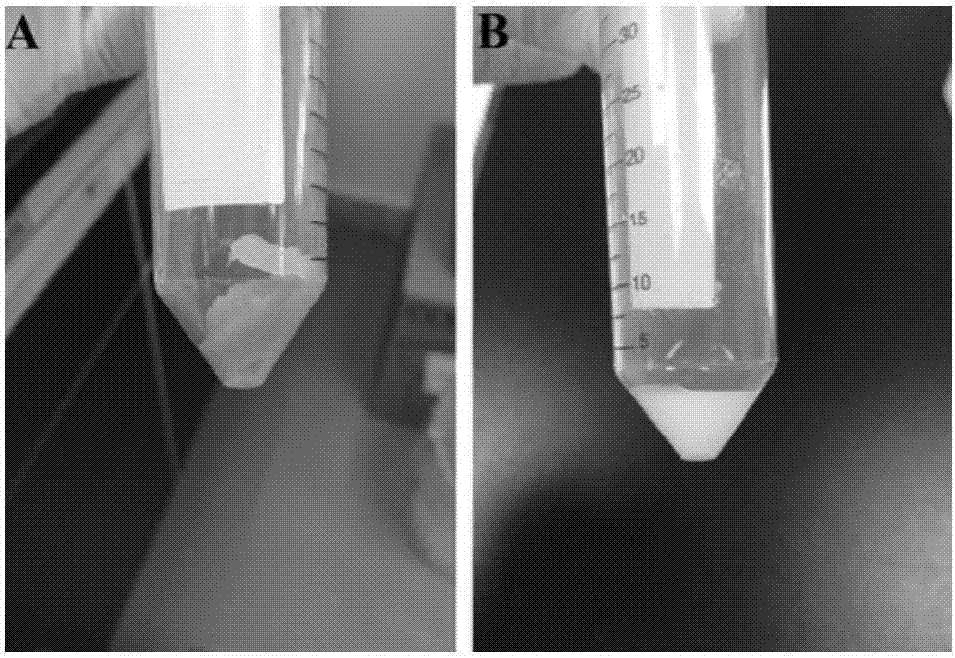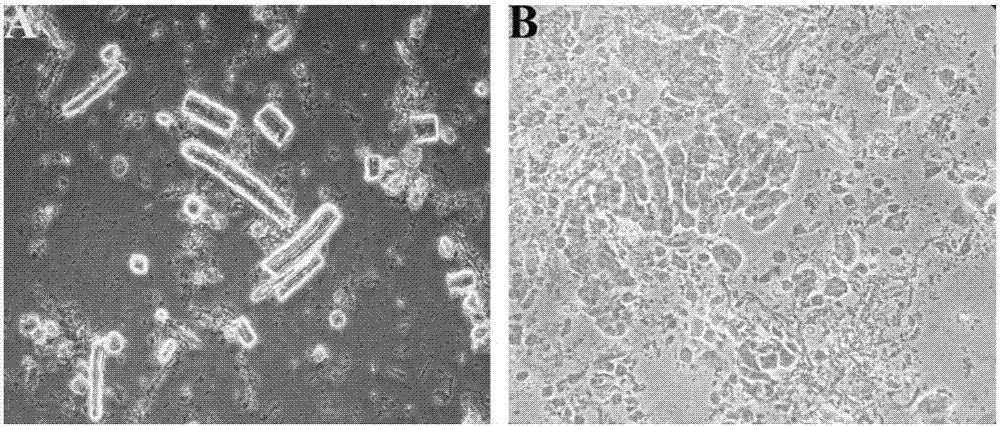Pig tissue chromatin immunoprecipitation processing method
An immunoprecipitation and processing method technology, applied in the field of animal immunology, can solve the problems of lack of systematic research methods, and achieve the effects of low cost, effective preparation and simple operation
- Summary
- Abstract
- Description
- Claims
- Application Information
AI Technical Summary
Problems solved by technology
Method used
Image
Examples
Embodiment 1
[0038] A kind of porcine tissue chromatin immunoprecipitation (ChIP) processing method, comprises the pretreatment of tissue and doing chromatin immunoprecipitation in cells, i.e. ChIP, its feature comprises the following steps:
[0039] (1) Weigh 1g of fresh porcine tissue, place it in a 50mL centrifuge tube, and cut the porcine tissue into about 1-3mm 3 small pieces;
[0040] (2) Add 23.75 mL of 1% formaldehyde solution, treat at room temperature for 15 minutes, and carry out cross-linking under the condition that the tissue is fully shaken;
[0041] (3) Add 1.25mL of 2.5M glycine to a final concentration of 125mM to terminate crosslinking, treat at room temperature for 5min, continue to shake the tissue under crosslinking conditions, and after 5min, centrifuge at 2500rpm, 25°C for 5min;
[0042] (4) Discard the supernatant, take the precipitate, resuspend the precipitate with 20mL of compound phosphate buffer, blow it up and down with an electric pipette, wash it, and then...
PUM
 Login to View More
Login to View More Abstract
Description
Claims
Application Information
 Login to View More
Login to View More - R&D
- Intellectual Property
- Life Sciences
- Materials
- Tech Scout
- Unparalleled Data Quality
- Higher Quality Content
- 60% Fewer Hallucinations
Browse by: Latest US Patents, China's latest patents, Technical Efficacy Thesaurus, Application Domain, Technology Topic, Popular Technical Reports.
© 2025 PatSnap. All rights reserved.Legal|Privacy policy|Modern Slavery Act Transparency Statement|Sitemap|About US| Contact US: help@patsnap.com



